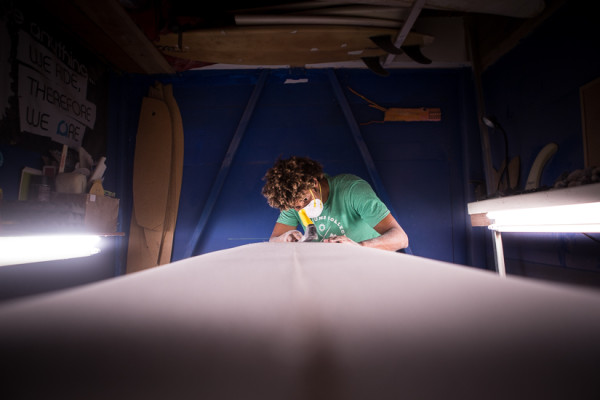Nothing will make you appreciate the skill and craftsmanship of your local board builder more than attempting to shape a surfboard yourself. The time and effort involved in seeing the process through from a foam blank to a seaworthy surf craft can be as rewarding as it is humbling. But before you start hacking away at the block of foam you’ve been storing in your garage, there are a few things you should know before shaping your first surfboard.

It Probably Won’t Come Out the Way You’ve Imagined It
Maybe you’ve had an idea of that magic board in your head for awhile and you’re finally ready to see it come to life. You sketch the outline of your board from every angle imaginable and get the measurements dialed down to the millimeter. When saws start cutting and foam starts flying, however, you’ll see that the board you’d imagined is probably not going to be the board you end up with.
You Can Do A Lot of Work with Only a Few Tools
Watching videos of master shapers at work, you might tend to think that creating a board outside of a shaping bay or without a power planer is impossible. The truth is that most of the big name shapers today got their start using nothing more than a handsaw, a manual planer, and some sandpaper.
Prepare to Get Messy…Very Messy
Don’t wear your Sunday best when you shape your first board. All of that cutting and sanding sends dust and foam chunks flying everywhere and getting rid of it can be a hassle. If you are going to be glassing your board as well, be prepared for the project to take on a whole new level of ‘messy.’
It Won’t Be Perfect, and That’s OK
Your first board won’t be perfect. Your fin placement might be off, your rails might be uneven, or your glass job might have some bubbles. Embrace the imperfections of your board and enjoy catching waves on something that you’ve created from your imagination with your own two hands.
You’ll Know More About Surfboard Design
Even if you don’t become the next Al Merrick or Rusty Preisendorfer, you’ll still come away from the experience knowing more about basic surfboard design and function than most surfers ever do. Understanding the specifics of surfboard fin placement, tail shape, bottom contours, and volume distribution will pay off big when it’s time to order your next board from a professional shaper.